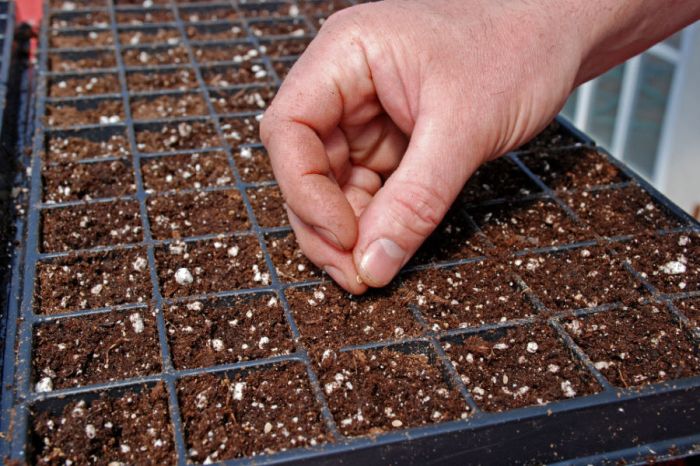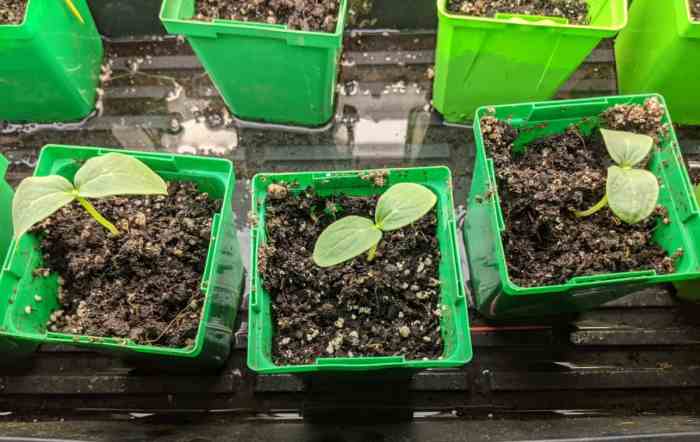How to Plant Flower Seeds Indoors
Choosing the Right Flower Seeds

Source: co.uk
How to plant flower seeds indoors – Selecting the appropriate flower seeds is crucial for successful indoor planting. Consider bloom time, light requirements, seed size, germination rate, and mature plant size. Always source seeds from reputable suppliers to ensure high-quality, viable seeds and accurate labeling.
Flower Seeds Ideal for Indoor Planting
The following table categorizes flower seeds suitable for indoor growing based on their bloom time and light requirements. Remember that these are general guidelines, and specific needs may vary depending on the cultivar.
| Flower | Bloom Time | Light Requirements |
|---|---|---|
| Calendula | Spring/Summer | Full sun to partial shade |
| Petunia | Spring/Summer | Full sun |
| Snapdragon | Spring/Summer | Full sun to partial shade |
| Marigold | Summer | Full sun |
| Impatiens | Summer | Partial shade |
| Cyclamen | Winter/Spring | Bright indirect light |
Factors to Consider When Selecting Seeds
- Seed Size: Smaller seeds require more delicate handling and may need more specific sowing techniques. Larger seeds are generally easier to plant.
- Germination Rate: This refers to the percentage of seeds that will successfully sprout. Choose seeds with a high germination rate for better results.
- Mature Plant Size: Consider the ultimate size of the mature plant to ensure you have adequate space for growth indoors.
Importance of Reputable Suppliers

Source: thisismygarden.com
Purchasing seeds from reputable suppliers guarantees higher germination rates and reduces the risk of introducing diseases or pests to your indoor garden. Look for suppliers with positive reviews and a strong reputation for quality.
Preparing for Planting
Proper preparation of the seed-starting mix and containers is essential for successful germination and seedling development. Sterilizing both the containers and soil minimizes the risk of fungal diseases.
Preparing Seed-Starting Mix
- Combine equal parts of peat moss, vermiculite, and perlite. This blend provides excellent drainage and aeration.
- Moisten the mix thoroughly, ensuring it’s evenly damp but not soggy. Squeeze a handful; it should hold its shape but not drip water.
- Avoid using garden soil directly, as it may contain pathogens or unwanted weed seeds.
Comparing Different Types of Containers
| Container Type | Pros | Cons | Suitability |
|---|---|---|---|
| Seed Trays | Efficient use of space, easy to manage | Requires careful watering | Ideal for small seeds |
| Individual Pots | Reduces transplant shock, good for larger seeds | Less space-efficient | Suitable for larger seeds or delicate seedlings |
| Peat Pellets | Easy to use, biodegradable | Can dry out quickly | Good for individual seedlings |
| Recycled containers (yogurt cups, etc.) | Cost-effective, readily available | May not be uniform in size or drainage | Suitable for budget-conscious gardeners; ensure proper drainage holes |
Sterilizing Containers and Soil
To prevent fungal diseases, sterilize your containers and seed-starting mix. You can achieve this by microwaving damp potting mix for a few minutes or by baking containers in the oven at a low temperature for 30 minutes.
Sowing the Seeds
The method of sowing seeds depends on the seed size and type. Proper depth and spacing are critical for successful germination and seedling growth. Consistent watering after sowing is also vital.
Sowing Techniques
- Broadcasting: Scattering seeds evenly over the surface of the soil. Suitable for small seeds.
- Direct Sowing: Planting seeds directly into individual containers or cells. Ideal for larger seeds.
- Seed Starter Kit: Using pre-made seed starting kits that often include containers, soil, and labels. Offers convenience.
Depth and Spacing Recommendations

Source: coopeduplife.com
Follow the seed packet instructions for recommended sowing depth and spacing. Generally, smaller seeds require less depth, while larger seeds need to be planted deeper. Adequate spacing prevents overcrowding and competition for resources.
Importance of Proper Watering, How to plant flower seeds indoors
After sowing, gently water the seeds using a fine mist spray or watering can with a rose attachment. Avoid overwatering, which can lead to damping off (a fungal disease).
Providing Optimal Growing Conditions
Light, temperature, and humidity are crucial for successful germination and seedling growth. Supplemental light is often necessary, especially during winter months or in areas with limited sunlight.
Importance of Light, Temperature, and Humidity
Seedlings require adequate light for photosynthesis. Maintain a consistent temperature range (ideally between 65-75°F) and sufficient humidity (around 50-70%) to promote healthy growth. Fluctuations in temperature and humidity can stress seedlings.
Methods of Providing Supplemental Light
- Grow Lights: Specialized lights designed to provide the full spectrum of light needed for plant growth.
- Fluorescent Lights: A more affordable option, but may not provide the optimal spectrum for all plants.
Light Requirements of Different Flower Seeds
| Flower | Light Requirements | Hours of Light |
|---|---|---|
| Petunias | Full Sun | 6-8 hours |
| Impatiens | Partial Shade | 4-6 hours |
| Snapdragons | Full Sun to Partial Shade | 6-8 hours (adjust based on shade tolerance) |
| Begonias | Bright Indirect Light | 4-6 hours |
Watering and Fertilizing
Consistent watering and appropriate fertilization are vital for healthy seedling development. Overwatering and underwatering can both negatively impact growth, as can nutrient deficiencies.
Watering Schedule
Water seedlings when the top inch of soil feels dry to the touch. Avoid letting the soil completely dry out or become waterlogged. Signs of underwatering include wilting leaves, while overwatering can lead to root rot and yellowing leaves.
Fertilizing Seedlings
Use a diluted, balanced liquid fertilizer once seedlings have developed their first true leaves. Follow the fertilizer instructions carefully, as over-fertilizing can harm seedlings. A balanced fertilizer (e.g., 10-10-10) provides essential nutrients.
Successfully starting flower seeds indoors involves careful attention to light, moisture, and temperature. Timing is crucial, and understanding the optimal planting schedule for your chosen flowers is key. This is similar to knowing when to plant other seeds, such as learning when to plant grass seeds , which requires research into suitable weather conditions. Returning to flowers, proper soil preparation and consistent care are also essential for healthy seedlings.
Symptoms of Nutrient Deficiencies
Nutrient deficiencies manifest in various ways. Yellowing leaves may indicate nitrogen deficiency, while stunted growth could signal a lack of phosphorus or potassium. Consult a gardening resource for more detailed information on identifying specific nutrient deficiencies.
Transplanting Seedlings
Transplanting seedlings into larger containers is necessary as they grow. Hardening off gradually acclimates seedlings to outdoor conditions before transplanting them outside.
Step-by-Step Guide to Transplanting
- Gently remove the seedling from its original container, being careful not to damage the roots.
- Plant the seedling in a larger container with fresh seed-starting mix, ensuring the root ball is at the same depth as before.
- Water gently after transplanting.
Importance of Hardening Off
Hardening off involves gradually exposing seedlings to outdoor conditions over several days. This reduces transplant shock and increases their chances of survival when moved outdoors.
Identifying When Seedlings Are Ready for Transplanting
Seedlings are usually ready for transplanting when they have developed several sets of true leaves and are becoming root-bound (roots circling the bottom of the container).
Troubleshooting Common Problems
Several common problems can arise when growing flower seeds indoors. Understanding the causes and solutions for these issues can help ensure successful cultivation.
Common Problems and Solutions
| Problem | Cause | Solution |
|---|---|---|
| Damping Off | Fungal disease caused by overwatering or poor sanitation | Improve drainage, sterilize containers and soil, avoid overwatering |
| Leggy Seedlings | Insufficient light | Provide supplemental light, move seedlings closer to light source |
| Pests | Infestation of aphids, whiteflies, or other insects | Treat with insecticidal soap or neem oil |
Healthy vs. Unhealthy Seedlings
Healthy seedlings are typically vibrant green, with strong stems and well-developed root systems. Unhealthy seedlings may exhibit yellowing or wilting leaves, stunted growth, or signs of disease or pest infestation.
Illustrating Seed Germination
Seed germination is a complex process involving several distinct stages. Understanding these stages can help you identify potential problems and take corrective action.
Stages of Seed Germination
- Imbibition: The seed absorbs water, initiating metabolic activity.
- Radicle Emergence: The embryonic root emerges from the seed coat.
- Plumule Emergence: The shoot emerges, followed by the development of cotyledons (seed leaves).
- True Leaf Development: The first true leaves develop, indicating the seedling is established.
Description of a Healthy Seedling
A healthy seedling at various stages will exhibit strong, upright growth, vibrant green coloration, and a well-developed root system. The root system should be extensive and white, while the shoot should be firm and free from blemishes or discoloration. The cotyledons will typically be plump and green, providing energy for initial growth.
Top FAQs: How To Plant Flower Seeds Indoors
What type of grow lights are best for indoor flower seeds?
Full-spectrum LED grow lights are generally recommended for their energy efficiency and ability to mimic natural sunlight. Fluorescent lights can also be effective, but may require closer proximity to the seedlings.
How often should I water my indoor flower seedlings?
Water when the top inch of soil feels dry to the touch. Avoid overwatering, which can lead to root rot. The frequency will depend on factors such as the type of seed, container size, and ambient humidity.
What should I do if my seedlings are leggy?
Leggy seedlings are caused by insufficient light. Move the seedlings closer to a light source or increase the duration of light exposure. You may also consider using a grow light to supplement natural light.
My seedlings have yellowing leaves. What could be the cause?
Yellowing leaves can indicate nutrient deficiencies (nitrogen deficiency is common), overwatering, or underwatering. Check your watering schedule and consider using a balanced fertilizer formulated for seedlings.





















